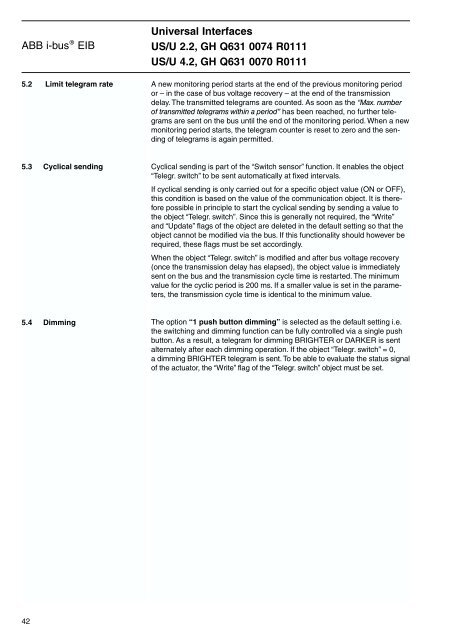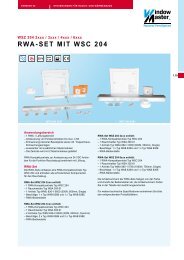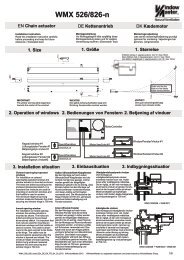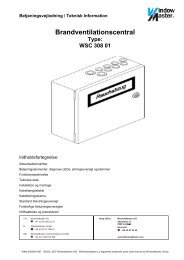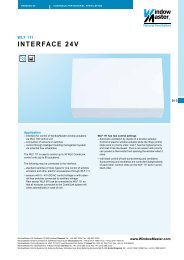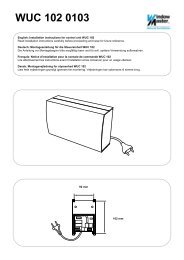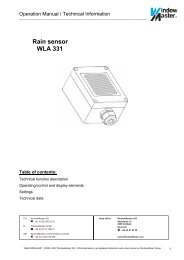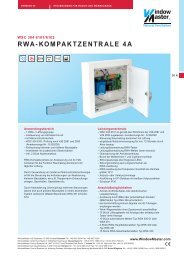ABB i-bus® EIB Universal Interfaces US/U 4.2 US/U ... - WindowMaster
ABB i-bus® EIB Universal Interfaces US/U 4.2 US/U ... - WindowMaster
ABB i-bus® EIB Universal Interfaces US/U 4.2 US/U ... - WindowMaster
Create successful ePaper yourself
Turn your PDF publications into a flip-book with our unique Google optimized e-Paper software.
<strong>ABB</strong> i-bus ® <strong>EIB</strong><br />
5.2 Limit telegram rate<br />
<strong>Universal</strong> <strong>Interfaces</strong><br />
<strong>US</strong>/U 2.2, GH Q631 0074 R0111<br />
<strong>US</strong>/U <strong>4.2</strong>, GH Q631 0070 R0111<br />
A new monitoring period starts at the end of the previous monitoring period<br />
or – in the case of bus voltage recovery – at the end of the transmission<br />
delay. The transmitted telegrams are counted. As soon as the “Max. number<br />
of transmitted telegrams within a period” has been reached, no further telegrams<br />
are sent on the bus until the end of the monitoring period. When a new<br />
monitoring period starts, the telegram counter is reset to zero and the sending<br />
of telegrams is again permitted.<br />
5.3 Cyclical sending<br />
Cyclical sending is part of the “Switch sensor” function. It enables the object<br />
“Telegr. switch” to be sent automatically at fixed intervals.<br />
If cyclical sending is only carried out for a specific object value (ON or OFF),<br />
this condition is based on the value of the communication object. It is therefore<br />
possible in principle to start the cyclical sending by sending a value to<br />
the object “Telegr. switch”. Since this is generally not required, the “Write”<br />
and “Update” flags of the object are deleted in the default setting so that the<br />
object cannot be modified via the bus. If this functionality should however be<br />
required, these flags must be set accordingly.<br />
When the object “Telegr. switch” is modified and after bus voltage recovery<br />
(once the transmission delay has elapsed), the object value is immediately<br />
sent on the bus and the transmission cycle time is restarted. The minimum<br />
value for the cyclic period is 200 ms. If a smaller value is set in the parameters,<br />
the transmission cycle time is identical to the minimum value.<br />
5.4 Dimming<br />
The option “1 push button dimming” is selected as the default setting i.e.<br />
the switching and dimming function can be fully controlled via a single push<br />
button. As a result, a telegram for dimming BRIGHTER or DARKER is sent<br />
alternately after each dimming operation. If the object “Telegr. switch” = 0,<br />
a dimming BRIGHTER telegram is sent. To be able to evaluate the status signal<br />
of the actuator, the “Write” flag of the “Telegr. switch” object must be set.<br />
42


